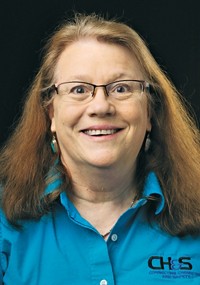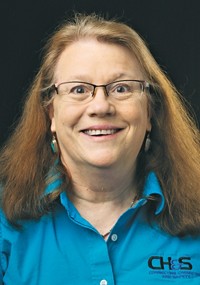Advertisement
Grab your lab coat. Let's get started
Welcome!
Welcome!
Create an account below to get 6 C&EN articles per month, receive newsletters and more - all free.
It seems this is your first time logging in online. Please enter the following information to continue.
As an ACS member you automatically get access to this site. All we need is few more details to create your reading experience.
Not you? Sign in with a different account.
Not you? Sign in with a different account.
ERROR 1
ERROR 1
ERROR 2
ERROR 2
ERROR 2
ERROR 2
ERROR 2
Password and Confirm password must match.
If you have an ACS member number, please enter it here so we can link this account to your membership. (optional)
ERROR 2
ACS values your privacy. By submitting your information, you are gaining access to C&EN and subscribing to our weekly newsletter. We use the information you provide to make your reading experience better, and we will never sell your data to third party members.
Comment
Leading change through a culture of safety
by Peter K. Dorhout, ACS President
July 22, 2018
| A version of this story appeared in
Volume 96, Issue 30

I’d like to begin this Comment with a safety message: Many of you are aware that I am a hobbyist woodworker. With that hobby comes a certain risk for injury. Even with all the safeguards in place and proper use of techniques for ripping boards, a guide block slipped on a board I was cutting on my table saw, and two fingers on my left hand suffered minor cuts. If you were at the 2018 Northwest Regional Meeting in June, you probably remember seeing me wearing bandages.
I talked about my injury with woodworking colleagues and assessed how we could conceive of better, safer methods for making these types of cuts in the future. We also discussed how we should all have first-aid equipment available in our woodworking shops to improve the response to an accident should one occur. We applied RAMP to the situation and are turning a negative outcome around and making our work safer. (RAMP is an acronym for the four elements of the chemical safety process: Recognize the hazard, assess the risk, minimize and manage risk, and prepare for emergencies.)
This culture of safety doesn’t apply to just what we do in our vocation but how we think and act everywhere. At the fall ACS national meeting in Boston, I’ll be cosponsoring a presidential symposium with the Division of Chemical Health & Safety (CHAS), “Moving the Safety Values of the ACS Forward.” This symposium will focus on how members have been working together on the recommendations of the ACS Safety Summit that we held in February.
In a July 9 Comment in C&EN, Ralph Stuart, chair of the ACS Committee on Chemical Safety (CCS), described many of the other activities that ACS members have been engaging in to lead the safety culture landscape for ACS. Ralph highlighted how CCS and CHAS have been partnering with the National Academies of Sciences, Engineering & Medicine and the Association of Public & Land-grant Universities (APLU) to advance a culture of safety in academic research.

As a leader within APLU’s Council on Research, I have been advocating for methods by which the council’s members, primarily university vice presidents and vice chancellors for research, can be change agents for improving the culture of safety in response to the 2016 APLU publication “A Guide to Implementing a Safety Culture in Our Universities.”
To recognize best practices and institutional leaders who are advancing a culture of safety, APLU partnered with the Campus Safety, Health & Environmental Management Association (CSHEMA) and on July 10 announced the CSHEMA Research Safety Awards. I hope you will take a few minutes to read more about these awards and consider the best practices being highlighted.
While many of the projects recognized by CSHEMA are broadly applicable across disciplines at colleges and universities, there were a few awards specific to chemistry departments, and I would like to call attention to just a few:
In the Innovation Award for Safety Culture category, Washington University in St. Louis received an Award of Honor for the chemistry department’s multipronged approach to improving research safety culture. The department has become a model for other departments at the university.
In the same category, the department of chemistry and biochemistry at Northern Illinois University received an Award of Merit for forming a Student Advisory Safety Committee (SASC), led by graduate students, to create and enhance cultural changes around safety. Student-led safety programs are not new, but the implementation at NIU contains some very creative approaches to improving safety culture.
The joint safety team concept, similar to a SASC, is one that has been promoted by CCS and CHAS through workshops led by graduate students. If you or your students are interested in learning more about how to develop a joint safety team, you may participate in the three-hour workshop offered at the ACS national meeting in Boston on Sunday, Aug. 19. Registration for limited spaces is available at www.dchas.org/2018/04/13/jst-workshop.
In the Innovation Award for Process Improvements category, Carleton College received an Award of Merit for developing a Custodial Training Guide for the custodial department staff who work in chemical laboratories but who have not typically benefited from the same training and communications as students and faculty. The program was adapted from a similar program at the University of Iowa and is an example of sharing safety information, which is promoted by the CCS Communications Subcommittee and recommended by the ACS Safety Summit.
Advertisement
These are just a few examples of the ways that chemistry departments are leading change.
Nothing can have a greater impact on the public trust of chemistry than demonstrating to the world that we care about our students, our colleagues, and our communities by promoting a culture of safety. If you have ideas or suggestions, please feel free to reach out to me at p.dorhout@acs.org.
Views expressed are those of the author and not necessarily those of C&EN or ACS.





Join the conversation
Contact the reporter
Submit a Letter to the Editor for publication
Engage with us on Twitter